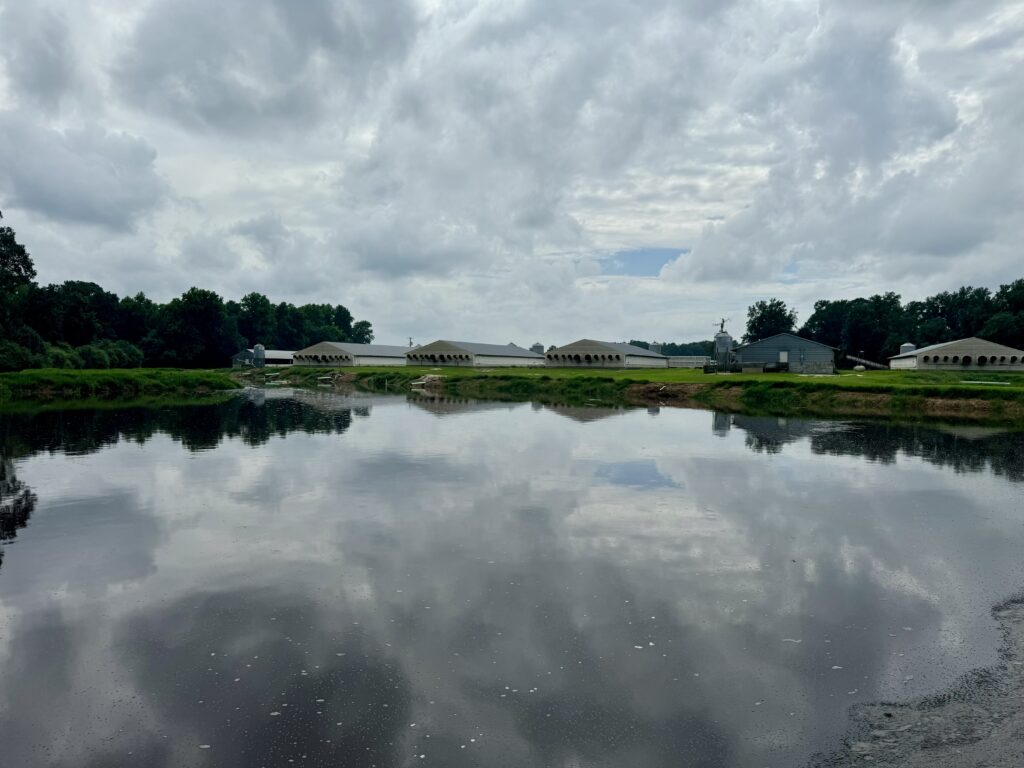As Tropical Storm Debby made its way through North Carolina this week, the NY Times ran an article Thursday warning about the potential danger of overflowing hog lagoons. It’s accompanied by a misleading photo of a flooded hog farm — from six years ago — that actually shows a lagoon successfully keeping the floodwaters at bay.
The article could have led with the promising news that there were “no reports of lagoon overflows.” That fact was buried in the 15th paragraph.
The reporter could have highlighted the waste spills that actually occurred in North Carolina this week, including a wastewater treatment plant in Brunswick County that spilled more than 750,000 gallons of waste into the Lockwood Folly River. That detail was tucked away in the 13th paragraph.
Wastewater treatment plants in North Carolina have long posed a greater threat to water quality than hog farms. Following Hurricane Florence in 2018, DEQ Secretary Michael Regan (now head of the US EPA) said: “We are really focused on our (municipal) wastewater treatment facilities because there are probably orders of magnitude more human waste that has escaped these wastewater treatment facilities than what has escaped these pig lagoons.”
But the NY Times wasn’t interested in shining a light on the threat of wastewater treatment plants. Instead, they highlighted concerns about what could possibly happen if hog lagoons overflowed. (Which they didn’t.)
To help make this point, the reporter turned to the Southern Environmental Law Center, an organization that is actively involved in litigation targeting the pork industry (a point that was conveniently absent from the article).
SELC emphasized the risks of lagoons flooding and blamed hog farms for contributing to climate change in the first place. (In a twist of irony, SELC and others continue to actively oppose renewable natural gas projects on North Carolina hog farms. Those projects greatly reduce greenhouse gas emissions and utilize covered lagoons that minimize the potential for flooding.)
Unfortunately, the NY Times didn’t bother to reach out to the pork industry for comment.
We would have told the reporter that the pork industry has worked together with the State of North Carolina to permanently close 43 hog farms and 103 lagoons located in the 100-year floodplain. Efforts like that do wonders to prevent flooding on our farms during tropical storms.
That’s just one notable omission in a story that appears designed to stoke unfounded fears rather than report the facts.
North Carolina hog farmers work tirelessly to prepare for storms like this one — and our farms have survived major hurricanes very well.
Hog farms must follow strict regulations designed to protect the environment. That includes maintaining more than a foot and half of available storage space in lagoons, an emergency measure precisely to handle rain from major storms like this.
We’re prepared for when the rains come. We just wish it wasn’t always accompanied by such irresponsible reporting.
To learn the truth of the matter about hog farms and hurricanes, visit ncpork.org/truth for an in-depth look at how hog farms are well prepared for storms.

A lagoon in eastern NC, in the wake of Tropical Storm Debby

